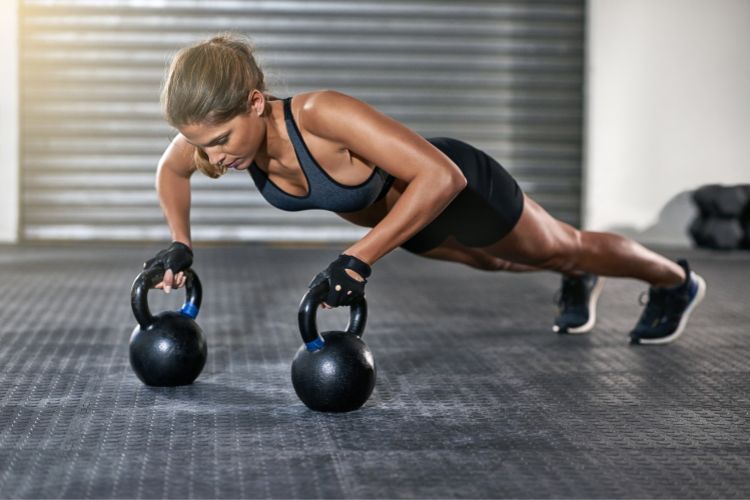Sign up for workout ideas, training advice, reviews of the latest gear and more.






Strength training is an essential component of overall fitness, and it’s not just for men. Women can benefit tremendously from incorporating full-body strength training into their fitness routines. Not only does it help build lean muscle, but it also boosts metabolism, improves bone density, and enhances overall functional fitness. In this blog post, we will discuss the importance of full-body strength training for women and provide a comprehensive workout plan to help you get started on your journey towards a stronger and healthier you.
Before we dive into the workout plan, let’s take a moment to understand why strength training is so crucial for women. There are several compelling reasons to incorporate strength training into your fitness regimen:
One of the most significant advantages of strength training is that it helps increase lean muscle mass. Contrary to common misconceptions, building muscle won’t make women bulky; instead, it provides a toned and sculpted appearance. Additionally, muscle tissue burns more calories at rest, which means that as you gain muscle, your metabolism gets a boost, making it easier to manage your weight.
Women are more susceptible to osteoporosis as they age due to hormonal changes. Strength training, particularly weight-bearing exercises, can help improve bone density and reduce the risk of fractures and osteoporosis. Strong bones are essential for maintaining overall health and longevity.
Strength training enhances your ability to perform everyday tasks with ease. It helps you build strength in your muscles, which is vital for activities like lifting groceries, carrying children, or even moving furniture. Functional fitness is about being strong and capable in your daily life.
Achieving strength and fitness goals can boost your self-confidence and overall mental well-being. Setting and achieving personal records in your workouts can be incredibly empowering, and the endorphins released during exercise can help alleviate stress and improve your mood.
Strength training can help regulate hormones in women, including insulin and cortisol. This balance can have a positive impact on weight management, energy levels, and overall health.
Now that you understand why strength training is so beneficial for women, let’s delve into a full-body strength training workout that you can incorporate into your routine.
This full-body strength training workout is designed to target major muscle groups and promote balanced muscle development. You can perform this workout 2-3 times a week, allowing at least one day of rest between sessions to allow your muscles to recover and grow.
Always start with a proper warm-up to prepare your muscles for the workout and reduce the risk of injury. Spend 5-10 minutes doing dynamic stretches, such as leg swings, arm circles, and bodyweight movements like jumping jacks or high knees.
For each exercise, aim for 3 sets of 10-12 repetitions, using a weight that challenges you but allows you to maintain proper form. As you progress, you can gradually increase the weight to continue challenging your muscles.
Squats are an excellent compound exercise that works your quadriceps, hamstrings, glutes, and lower back. Stand with your feet shoulder-width apart, and slowly lower your body by bending your knees and pushing your hips back. Keep your back straight, and your knees should not extend beyond your toes. Return to the starting position by pushing through your heels.
Push-ups are a fantastic upper body exercise that targets your chest, shoulders, and triceps. Start in a plank position with your hands shoulder-width apart. Lower your body towards the ground by bending your elbows, keeping your body in a straight line. Push back up to the starting position.
Bent-over rows are a great exercise for your upper back, shoulders, and biceps. Hold a dumbbell in each hand and stand with your feet hip-width apart. Bend at your hips to lean forward slightly while keeping your back straight. With your arms extended, pull the dumbbells towards your hips, squeezing your shoulder blades together. Lower the weights back down with control.
Deadlifts are a compound exercise that targets your lower back, glutes, hamstrings, and core. Stand with your feet hip-width apart and a barbell in front of you. Bend at your hips and knees to lower your body and grasp the barbell with an overhand grip. Keep your back straight and chest up as you stand up, lifting the barbell by extending your hips and knees. Lower the barbell back to the ground with control.
Lunges are excellent for working your quadriceps, hamstrings, glutes, and calves. Stand with your feet together, and take a step forward with one foot. Lower your body by bending both knees until they form 90-degree angles. Push back up to the starting position and repeat with the other leg.
Planks are a fantastic core-strengthening exercise. Start in a push-up position, but instead of resting on your hands, lower yourself onto your forearms. Keep your body in a straight line from head to heels and hold this position for as long as you can, aiming for at least 30 seconds to start.
After completing your strength training workout, it’s crucial to cool down and stretch to improve flexibility and reduce muscle soreness. Spend 5-10 minutes performing static stretches for all major muscle groups, holding each stretch for 15-30 seconds.
To maximize the benefits of your strength training workout, it’s essential to fuel your body properly. Consume a balanced diet rich in lean protein, complex carbohydrates, healthy fats, and plenty of fruits and vegetables. Adequate hydration is also crucial for muscle recovery.
In addition to nutrition, prioritizing rest and recovery is vital. Make sure to get enough sleep to allow your muscles to repair and grow. Consider incorporating activities like yoga or foam rolling into your routine to alleviate muscle tension and improve flexibility.
As you continue with your strength training journey, it’s essential to monitor your progress and adjust your workouts accordingly. Track your exercises, weights, repetitions, and rest periods to ensure that you are continually challenging yourself. Gradually increase the weight or intensity of your exercises to keep your muscles adapting and growing.
Strength training is a powerful tool for women to improve their overall health and fitness. Incorporating a full-body strength training workout into your routine can help you build lean muscle, boost metabolism, enhance bone health, and improve functional fitness. Remember to start with proper warm-up and cool-down routines, use proper form, and progressively challenge yourself as you grow stronger. With dedication and consistency, you can achieve your strength and fitness goals and enjoy the numerous benefits that come with a stronger body. So, go ahead and embrace the world of strength training – your body will thank you for it!
Stay up to date on the latest women’s health, fitness and lifestyle trends and tips.